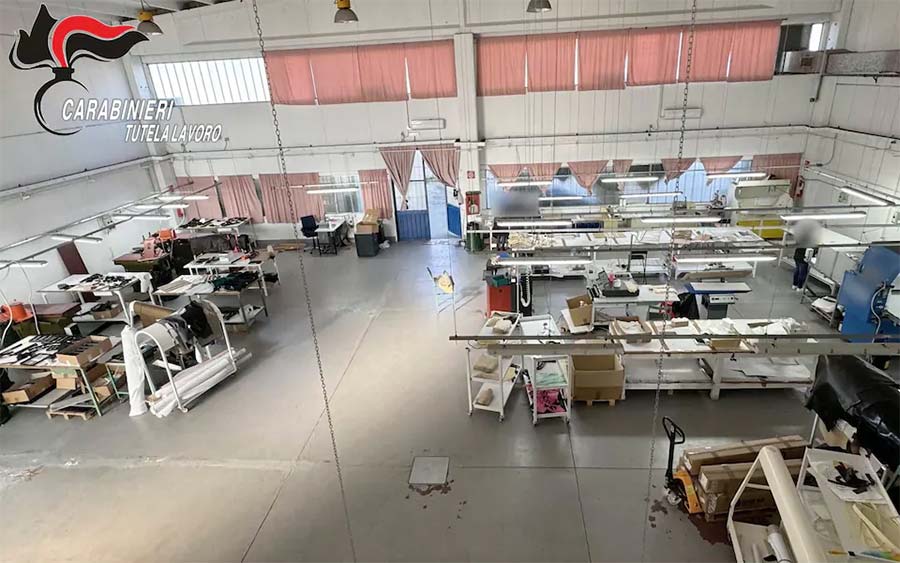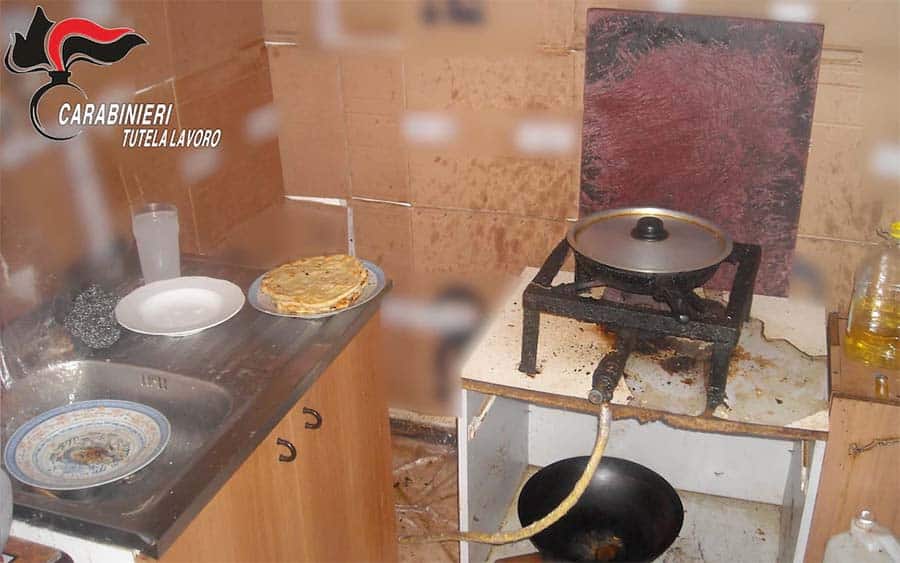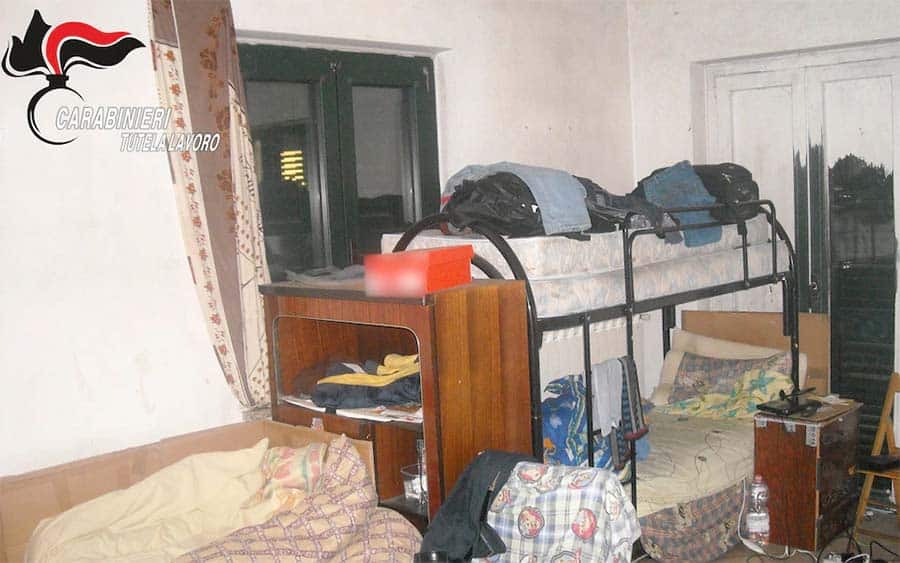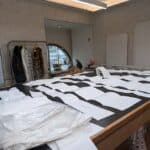Oh, darling, let me spill the Chinese tea with a touch of class and a wink to the scandalous. My latest adventure had me jet-setting to Milan, the epitome of fashion and luxury, a place where the streets practically shimmer with the latest from high couture. As I sashayed through the cobblestone alleys, latte in hand and designer shades perched on my nose, I stumbled upon a story so spicy, it nearly made me drop my espresso.
Yes, I’m about to unravel the thread on the “Made in Italy” label, weaving through a tale that has everything: glamour, controversy, and an unexpected twist.
Now, picture this: Giorgio Armani, the emperor of elegance, recently found himself entangled in a web that’s more complex than the patterns on his latest runway collection. The buzz around Milan’s fashion circles was impossible to ignore.
An Italian court had clapped back at Armani’s operations over something that seemed plucked straight from a drama series: the exploitation of Chinese workers. I mean, who would’ve thought?

Let Me Take You Behind The Seams
Let me take you behind the seams. The whole stitch-up unraveled when the labor inspectorate did a little digging and found that a subsidiary of Armani, dedicated to crafting those drool-worthy accessories we all covet, had outsourced work to, let’s say, less-than-legal workshops in Milan’s own backyard. These places were using off-the-books Chinese labor to produce bags and belts that scream luxury but were born from sweat and toil.
Now, before you think it’s all gloom, let me paint the picture with a shade of opulence. Imagine me, in my vintage high heels, nearly tripping over the revelation that the subcontractor, Manifatture Lombarde, pocketed a cool €1.6 billion from Armani.
The plot thickens with every cent not spent on taxes or social security, all while workers hustled in conditions far removed from the glossy pages of a fashion magazine.
But here’s where it gets juicy: these artisans were sewing and stitching for more than 14 hours a day, for a wage that wouldn’t even buy you a macaron in Paris, let alone a corner of an Armani clutch. And their living conditions? Darling, let’s just say my designer heart weeps.
Yet, in a twist fit for a Milanese opera, Giorgio Armani himself isn’t in the spotlight for this fashion faux pas. But that didn’t stop the house of Armani from being swept up in a whirlwind of judicial drama, fined more than the price of their most extravagant gown.

Living on the picturesque island ofKoh Samui, where the turquoise sea kisses golden sands, my journey took a pivotal turn when I became part of a condo business. The revelation of what lay behind its luxurious facade was as jarring as a bolt of lightning in a clear blue sky. The staff kitchen, a critical heart of the establishment, was in a state that could only be described as despairing. Managed by westerners before my tenure, the sight was so disheartening, it brought me to tears.
This experience was an eye-opener, a moment of stark realization that echoed the darker sides of industries far beyond hospitality, reaching into the glamorous realm of fashion. It’s a world I adore, with its dazzling designs and the allure of opulence, yet it’s also where beauty and elegance often mask realities that are anything but. The situation I encountered at the condo mirrored the troubling aspects of the fashion industry, where the treatment of workers, the artisans behind the allure, frequently goes unnoticed or, worse, ignored.
Taking control of the condo, I vowed to rewrite the narrative, ensuring the environment reflected respect, dignity, and fairness. The transformation was profound, turning a place of neglect into one that uplifted spirits and underscored the value of those who contribute their skills and hard work. It was a testament to what leadership with a conscience could achieve.
This personal crusade against neglect and exploitation brought me to a broader, more pervasive issue: the accountability of the fashion industry.
The scandal involving a luxury brand exploiting Chinese laborers in Milan was a stark reminder of the hidden costs of glamour. As someone who revels in the world of high fashion, I was compelled to confront an uncomfortable question: What are the stories woven into the fabrics of the clothes we wear? Are they tales of empowerment and artistry, or are they narratives of exploitation and sorrow?
Fashion, with its capacity to inspire and transform, has an undeniable power. It has the ability to make statements not just about style, but about ethics and values. As consumers, we wield influence through our choices, our voices, and our demands for transparency and fairness. It’s imperative we ask ourselves and the brands we support: How are the artisans treated? What are the conditions under which beauty is created?
Mafia Money
Now, let’s take a moment because as I sit here, draped in fabrics worth a small fortune, typing this tale, it strikes me how Milan’s underbelly is as intricate as its lacework. The city, a blend of the mafia’s dark allure and the dazzling light of fashion runways, continues to thrive with an underground economy that’s as rich as its cultural tapestry.
The plight of the workers in Milan and the transformation of the condo in Koh Samui are chapters of the same story—a call to action for accountability, change, and compassion. The elegance and luxury we cherish in the fashion world must not be built on the invisibility and exploitation of its craftsmen. As I stride forward in my opulent lifestyle, I carry with me the lesson of the condo kitchen: true beauty, in fashion as in life, is rooted in the respect and dignity afforded to every individual behind the scenes.
In the end, the luxury and glamour we adore should be a reflection of a world where beauty is ethical, where fashion is fair, and where every stitch and seam tells a story of empowerment. It’s a vision worth striving for, a cause to rally behind, and a future where every garment we drape ourselves in is as beautiful in its origins as it is in its appearance.

So, as I wrap up this couture tale, remember, darling, that the world of high fashion is a tapestry of beauty, secrets, and sometimes, a little bit of mischief. But isn’t that just what makes it so irresistibly fascinating? As for me, I’ll continue to dance through this opulent life, one scandalous story at a time, always looking for the next stitch to unravel in the grand design of luxury living.















You must be logged in to post a comment.